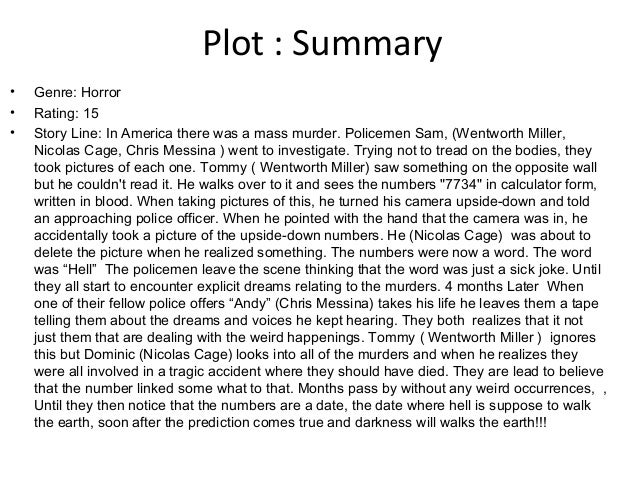A Plot Summary
Plot definition, a secret plan or scheme to accomplish some purpose, especially a hostile, unlawful, or evil purpose: a plot to overthrow the government. A plot summary is a description of the story in a novel, film or other piece of storytelling. It is not a review and should not contain the opinions of the author. It should contain all the.
8 Elements of a Story Explained
What are the main ELEMENTS OF A STORY?
Lesson Summary In this lesson, you were introduced to the plot of a story. Each plot has five distinctive features: exposition, rising action, climax, falling action, and resolution. As explained in Wikipedia:Plot-only description of fictional works, an encyclopedia article about a work of fiction frequently includes a concise summary of the plot. The description should be thorough enough for the reader to get a sense of what happens and to fully understand the impact of the work and the context of the commentary about it.
- Setting
- Character
- Conflict
- Theme
- Point-of-view
- Tone
- Style

These are the basic elements of a story that you learn about in elementary school:
1. Setting: Where and when is the story set? Setting represents both the physical location but also the time (i.e. past, present, future) and the social and cultural conditions in which the characters exist.
2. Character: A person or animal or really anything personified. There can be one main character or many, and often there are secondary characters, but not always.
3. Plot: The plot consists of the events that happen in the story. In a plot you typically find an introduction, rising action, a climax, the falling action, and a resolution. Plot is often represented as an arc. To learn about plot in detail, read the article: “What is a Plot.”

4. Conflict: Every story must have a conflict, i.e. a challenge or problem around which the plot is based. Without conflict, the story will have no purpose or trajectory.
5. Theme: Idea, belief, moral, lesson or insight. It’s the central argument that the author is trying to make the reader understand. The theme is the “why” of the story.
In high school, you start learning the advanced elements of a story:
6. Point-of-view: “Who” is telling the story? First person (“I”) or third person (“he/she/it”). Limited (one character’s perspective), multiple (many characters’ perspectives) or omniscient (all knowing narrator). Second person (“you”) is not often used for writing stories.

7. Tone: The overall emotional “tone” or meaning of the story. Is it happy, funny, sad, depressed? Tone can be portrayed in multiple ways, through word and grammar choices, choice of theme, imagery and description, symbolism, and the sounds of the words in combination (i.e. rhyme, rhythm, musicality).
8. Style: This is how things are said. Word choices, sentence structure, dialogue, metaphor, simile, hyperbole. Style contributes significantly to tone.
Literary Essay: How and Why
When analyzing a piece of literature for a paper or essay, you’re basically looking for “how and why.” Explain how the author used the above elements of a story (or one of the above elements) and why they are significant, or why they work or don’t work, or alternatively, why you like or don’t like them. If you understand one or more of these elements in depth, you’ll be well on your way to a quality literary essay.

To learn about PLOT in detail, read the article: “What is a Plot of a Story?“
Are you teaching this topic? Here’s a perfectly printable PDF of the elements of a story.

Check out 10 Steps to an A+ Essay to see our formula for acing an essay! A helpful infographic is also provided.
How To Do A Plot Summary
Looking for a book on this topic? Try The Elements of Story: Field Notes on Nonfiction by New York Times Editor, Francis Flaherty.
A Plot Summary Brainly
*This article updated on July 21, 2020.